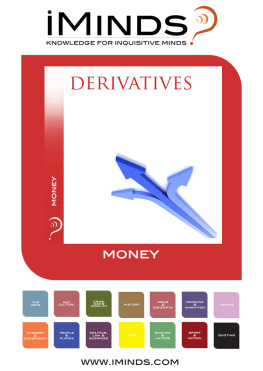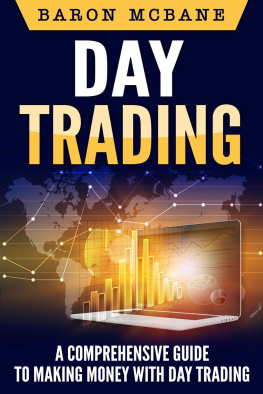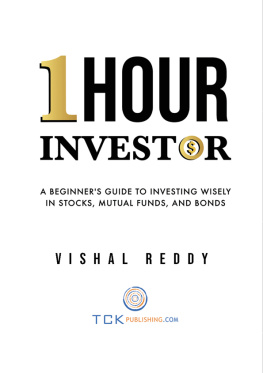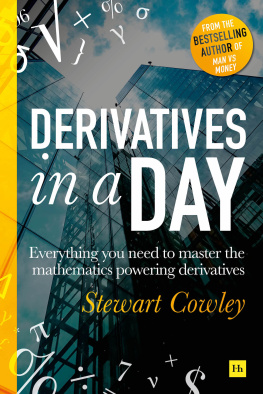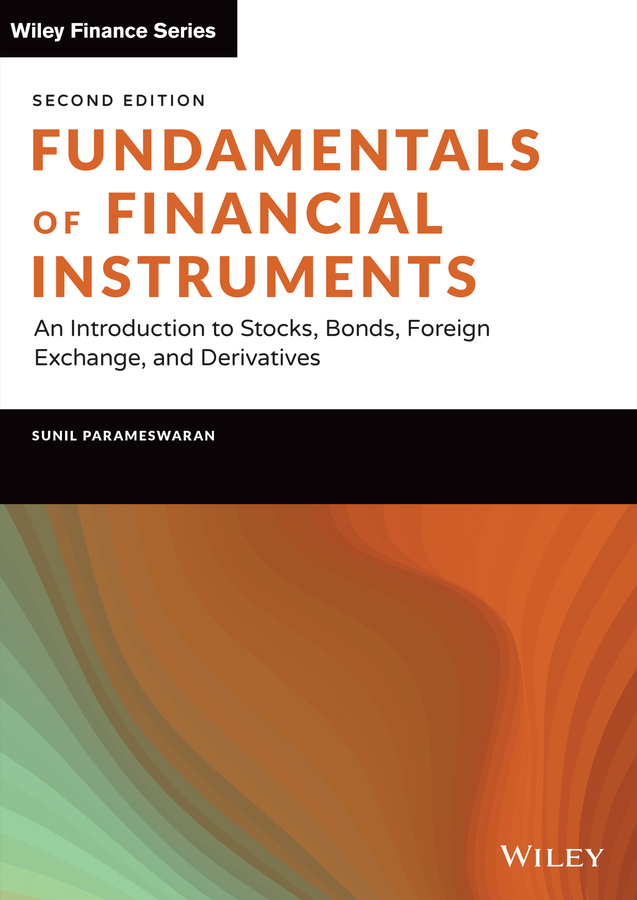
Table of Contents
List of Tables
- Chapter 1
- Chapter 2
- Chapter 3
- Chapter 4
- Chapter 5
- Chapter 6
- Chapter 7
- Chapter 8
- Chapter 9
- Chapter 10
- Chapter 11
- Chapter 12
- Chapter 14
List of Illustrations
- Chapter 1
- Chapter 2
- Chapter 3
- Chapter 4
- Chapter 6
- Chapter 7
- Chapter 8
- Chapter 14
Guide
Pages
Founded in 1807, John Wiley & Sons is the oldest independent publishing company in the United States. With offices in North America, Europe, Australia and Asia, Wiley is globally committed to developing and marketing print and electronic products and services for our customers' professional and personal knowledge and understanding.
The Wiley Finance series contains books written specifically for finance and investment professionals as well as sophisticated individual investors and their financial advisors. Book topics range from portfolio management to e-commerce, risk management, financial engineering, valuation and financial instrument analysis, as well as much more.
For a list of available titles, visit our Web site at www.WileyFinance.com.
Fundamentals of Financial Instruments
An Introduction to Stocks, Bonds, Foreign Exchange, and Derivatives
SUNIL PARAMESWARAN
Second Edition

Copyright 2022 by John Wiley & Sons Singapore Pte. Ltd.
Published by John Wiley & Sons Singapore Pte. Ltd.
1 Fusionopolis Walk, #07-01, Solaris South Tower, Singapore 138628
All rights reserved.
Edition History
John Wiley & Sons Singapore Pte. Ltd. (1e, 2011)
No part of this publication may be reproduced, stored in a retrieval system, or transmitted in any form or by any means, electronic, mechanical, photocopying, recording, scanning, or otherwise, except as expressly permitted by law, without either the prior written permission of the Publisher, or authorization through payment of the appropriate photocopy fee to the Copyright Clearance Center.
Requests for permission should be addressed to the Publisher, John Wiley & Sons Singapore Pte. Ltd., 1 Fusionopolis Walk, #07-01, Solaris South Tower, Singapore 138628, tel: 6566438000, fax: 6566438008, e-mail: .
Limit of Liability/Disclaimer of Warranty: While the publisher and author have used their best efforts in preparing this book, they make no representations or warranties with respect to the accuracy or completeness of the contents of this book and specifically disclaim any implied warranties of merchantability or fitness for a particular purpose. No warranty may be created or extended by sales representatives or written sales materials. The advice and strategies contained herein may not be suitable for your situation. You should consult with a professional where appropriate. Neither the publisher nor the author shall be liable for any damages arising herefrom.
Other Wiley Editorial Offices
John Wiley & Sons, 111 River Street, Hoboken, NJ 07030, USA
John Wiley & Sons, The Atrium, Southern Gate, Chichester, West Sussex, P019 8SQ, United Kingdom
John Wiley & Sons (Canada) Ltd., 5353 Dundas Street West, Suite 400, Toronto, Ontario, M9B 6HB, Canada
John Wiley & Sons Australia Ltd., 42 McDougall Street, Milton, Queensland 4064, Australia
Wiley-VCH, Boschstrasse 12, D-69469 Weinheim, Germany
Library of Congress Cataloging-in-Publication Data is Available:
9781119816614 (Hardback)
9781119816645 (ePDF)
9781119816638 (ePub)
Cover Design: Wiley
Cover Image: naqiewei/Getty Images
Author photo: Courtesy of Sunil Parameswaran
To my students in India, Australia, Singapore, and the United States over the past 30 years.
Preface
Readers the world over have appreciated the first edition of this book, which appeared over a decade ago. Some people pointed out that I should include more material on financial institutions and the key features of the markets in which financial products trade.
Consequently, I have included a detailed chapter on mutual funds, pension funds, and exchange-traded funds. There is also a new chapter on orders and exchanges, which deals with continuous markets in detail, with a brief focus on call markets as well. Macroeconomic issues are key for understanding financial markets, and hence there is a new chapter on such issues. The chapter is by no means exhaustive, and people wishing to acquire a more detailed perspective would have to look for an economics text.
Interest rate derivatives are perhaps the hardest product to explain in futures and options. Consequently, while the book continues to have three separate chapters on futures, options, and swaps, I have opted to include a chapter on interest rate derivatives and on financial products with such derivatives built in, such as callable bonds and putable bonds.
Excel has many useful functions for students and professionals in the field of Finance. I have described the use of many of these functions at key places in the book.
The previous edition had some statistical information on markets, and certain qualitative descriptive features, which I felt were better to remove. I have eliminated such features in the second edition. I feel that a chapter on clearing and settlement may be relevant for the kind of audience that this book aims to address. I will bring that in if and when there is a third edition.
Readers are welcome to share their comments and suggestions with me. Constructive advice and criticism is welcome and will be incorporated while undertaking revision of the material in future. My email is:
I hope that the book serves as a source of pertinent and comprehensive knowledge for readers everywhere.
Sunil K. Parameswaran
Director & CEO
Tarheel Consultancy Services
Manipal, India
November 2021
Preface to the First Edition
This book grew out of my lecture notes used for corporate training programs in India and abroad. The feedback from participants has been invaluable in polishing and refining the exposition. The eventual flow and clarity that I believe I have been able to achieve is in no small measure due to the critical and incisive inputs of my students as well as professional acquaintances.
There is typically no course exclusively on financial instruments in most MBA curricula. Consequently, this topic invariably gets combined with material on financial institutions as part of a course on Financial Markets. I, however, believe that there is a strong case for offering a comprehensive course on financial instruments for second-year MBA students. However, care should be taken to ensure that material which is covered in traditional courses like Financial Derivatives and Fixed Income Securities is not repeated any more than is necessary. Many students who take such a course may not be majoring in Finance and consequently may not take specialized courses such as Derivatives. For them therefore the specter of substantial overlap is less of an issue. Even for students of Finance, despite the inevitable repetition of facets of topics such as Bonds, Futures, and Options, a course on instruments is a comprehensive and integrated offering that will serve them in good stead in the future.
The book starts from first principles and builds in intensity. Exposure to one or more courses on Financial Management will certainly be useful for the reader as he or she navigates through the material. While the book is a standalone treatise on the subject, readers may like to augment it with standard texts on issues in Finance such as Security Analysis, Bond Markets, Futures & Options, and International Finance.
Next page


